Originally released October 7, 2023.
For IMMEDIATE RELEASE
Media Contact:
Prof. Kurt Jordan, Cornell University & Indigenous Dispossession (CU&ID) Committee Co-chair: kj21@cornell.edu
Leslie Logan, CU&ID Committee Co-chair: ll88@cornell.edu
Cornell University’s Land Grab Impacts 251 Tribes
Diplomatic Outreach Efforts Inform Native Nations of Cornell’s Connection to Extensive Dispossession of Indigenous Lands and Resources
(GAYOGO̱HÓ:NǪˀ HOMELANDS, ITHACA, New York, October 7, 2023) — More than 160 years ago the federal Land Grant College Act of 1862, also known as the Morill Act, paved the way for Cornell University to secure rights to nearly one million acres of land. Cornell’s gain accompanied widespread losses to more than 250 tribes in terms of land and resources as Indigenous peoples were dispossessed and removed from their homelands through federal and state actions backed by force and fraud. In homage to Indigenous Peoples’ Day (October 9, 2023) the American Indian and Indigenous Studies Program’s Cornell University & Indigenous Dispossession (CU&ID) Project released a list of 251 Native nations tied to Cornell University’s land grab.
The Gayogo̱hó:nǫɁ (Cayuga) are among the affected tribes as Cornell University’s sprawling 745-acre campus sits on the ancestral homelands of the Gayogo̱hó:nǫɁ. While Cornell’s local and regional landholding acquisitions used a process separate from the Morrill Act, the legislation enabled the founding of the University and generated funds for local land purchases.
For context of the breadth of impact to Indigenous Nations, there are 574 federally recognized tribes and another 63 state-recognized tribes in the Unites States. The Association on American Indian Affairs estimates there are about 400 other Indigenous communities that have not been acknowledged by the U.S. Department of the Interior. Cornell, one institution of higher education alone, impacted almost one-quarter of these groups across the country—not just tribes known to occupy New York State and the Northeast but also extending to the west coast. The wide swath of Cornell’s dispossession ties stretch from Alberta, Canada with the Siksika Nation to the Akwesasne Mohawk territory in New York and Quebec, to the Arapaho of Wind River in Wyoming. The full list of 251 affected tribes can be found at: https://blogs.cornell.edu/cornelluniversityindigenousdispossession/impacted-communities/
The Cornell University & Indigenous Dispossession Project’s efforts began in June 2020 in response to the High Country News article “Land Grab Universities” by Robert Lee and Tristan Ahtone. Lee and Ahtone’s article catalyzed further research and the associated website lists the 52 universities that benefitted from the expropriation of more than 11 million acres of Indigenous land and millions of dollars in resources https://www.landgrabu.org/
Out of the 52 land grant universities, Cornell University was the greatest beneficiary of all, having received federal “scrip” (vouchers) for almost one million acres of Indigenous land—the most land allocated to any university. Land in 15 present-day states eventually was claimed using Cornell scrip. Cornell sold all of its Morrill Act lands by 1938, but the revenues from these sales contributed to Cornell’s endowment, built many of the most iconic buildings on campus, and provided most of Cornell’s operating funds for the university’s first 30 years. According to the last available University financial report with information on Morrill Act revenues (2005), the principal fund value was reported as $53.3 million, providing an annual interest payout of $2.58 million in unrestricted funds. In 2023 dollars, the payout amount is approximately $4.0 million per year.
The High Country News study stated that land-grant universities have a moral responsibility to own up to their actions as they have fundamentally profited (and continue to profit) from Indigenous dispossession. To address Cornell’s responsibility, the CU&ID committee committed to diplomatic outreach efforts to inform the leadership of affected Indigenous Nations about the connection between Cornell’s establishment and their homelands. This was a long-term research effort that sought to determine the present-day descendants of the original treaty signees, as well as other groups whose lands had been taken by other means. The CU&ID committee conceived of the list as including both recognized and unrecognized groups, as well as Nations that had been displaced across international borders. The diplomatic outreach process was completed in July 2023. To date, members of the committee have had dialogue with approximately 10% of the dispossessed tribes.
Prof. Kurt Jordan, co-chair of the CU&ID committee said, “One goal of the committee’s outreach effort is to generate and engage a broad-based coalition of Indigenous governments. We hope to speak with many more of the 251 impacted Nations on the list.”
Prof. Troy Richardson, Tuscarora/Saponi, Director of the AIISP and members of the CU&ID committee, originally formulated the diplomatic outreach to each affected Indigenous Nation and the Dispossession blog as actions for accountability. Richardson noted, “The individual letters to the leadership of the respective Indigenous Nations sought to open direct engagements with each Nation. The outreach effort was in part meant to facilitate an unmediated discussion wherein Indigenous Nation leadership could express the interests and concerns of their people to the Cornell Administration and convey in their own terms what the ‘next steps’ might entail.”
AIISP intends to compile the results of these and ongoing discussions with Native communities and present them to the Cornell administration.
Leslie Logan, Seneca, co-chair of the CU&ID committee and associate director of the American Indian and Indigenous Studies Program said, “When you have 251 tribes dispossessed by an elite institution, you have significant impact. We encourage Native Nations and leaders to contact Cornell University about issues they would like to see addressed. The committee is eager to engage with Native peoples and explore how we can best support the interests and concerns of affected Native communities.”
More information on the Indigenous Dispossession Project can be found on the AIISP website https://blogs.cornell.edu/cornelluniversityindigenousdispossession/.
# # #
For a link to PDF and Word Document versions of the press release, please visit here.
